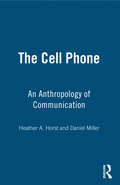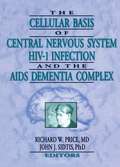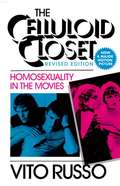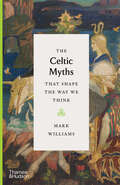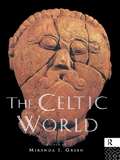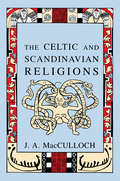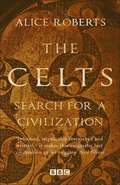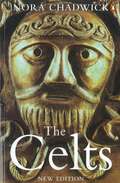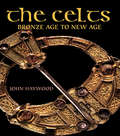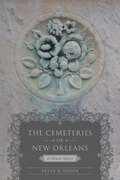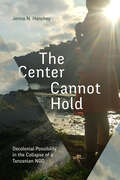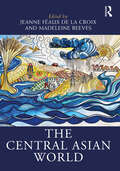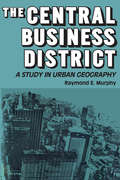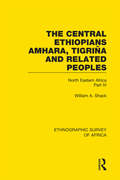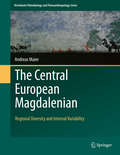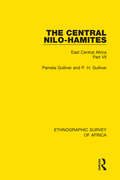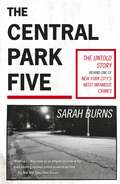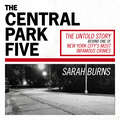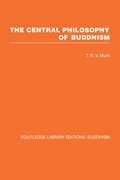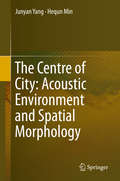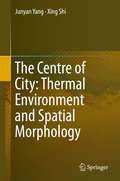- Table View
- List View
The Cell Phone: An Anthropology of Communication
by Daniel Miller Heather HorstFew modern innovations have spread quite so quickly as the cell phone. This technology has transformed communication throughout the world. Mobile telecommunications have had a dramatic effect in many regions, but perhaps nowhere more than for low-income populations in countries such as Jamaica, where in the last few years many people have moved from no phone to cell phone. This book reveals the central role of communication in helping low-income households cope with poverty. The book traces the impact of the cell phone from personal issues of loneliness and depression to the global concerns of the modern economy and the transnational family. As the technology of social networking, the cell phone has become central to establishing and maintaining relationships in areas from religion to love. The Cell Phone presents the first detailed ethnography of the impact of this new technology through the exploration of the cell phone's role in everyday lives.
The Cellular Basis of Central Nervous System HIV-1 Infection and the AIDS Dementia Complex
by Richard W Price John J SidtisIn this exciting symposium, the editor brings to print important new information on AIDS and how HIV affects the brain. Each chapter focuses on one or more of the cell types that reside in or traffic through the central nervous system (CNS). Each of these cells is important to considerations of the pathogenesis of the CNS. Neurologists, AIDS physicians, and other professionals caring for AIDS patients will find that this “cell-based” view provides a unique perspective and that it will guide and stimulate future investigation of this clinically important and pathogenetically intriguing disorder. The editor also introduces some general considerations for therapeutic intervention of AIDS dementia complex (ADC).The contributors to The Cellular Basis of Central Nervous System HIV-1 Infection and the AIDS Dementia Complex deal with the cells and mechanisms involved in HIV-1 brain infection and the resultant ADC. Each author was asked to review the involvement of their assigned cells in CNS HIV-1 infection and how these cells might be involved in the pathology and process of brain injury associated with ADC. Readers will be enlightened on the functional roles of various cells and how these cells and mechanisms might fit into the broader picture of ADC pathogenesis.
The Celluloid Closet: Homosexuality in the Movies
by Vito RussoPraised by the Chicago Tribune as "an impressive study" and written with incisive wit and searing perception--the definitive, highly acclaimed landmark work on the portrayal of homosexuality in film.
The Celluloid Specimen: Moving Image Research into Animal Life
by Benjamin Schultz-FigueroaA free ebook version of this title is available through Luminos, University of California Press’s Open Access publishing program. Visit www.luminosoa.org to learn more. In The Celluloid Specimen, Benjamín Schultz‑Figueroa examines rarely seen behaviorist films of animal experiments from the 1930s and 1940s. These laboratory recordings—including Robert Yerkes's work with North American primate colonies, Yale University's rat‑based simulations of human society, and B. F. Skinner's promotions for pigeon‑guided missiles—have long been considered passive records of scientific research. In Schultz‑Figueroa's incisive analysis, however, they are revealed to be rich historical, political, and aesthetic texts that played a crucial role in American scientific and cultural history—and remain foundational to contemporary conceptions of species, race, identity, and society.
The Celtic Myths that Shape the Way We Think
by Mark WilliamsA fresh and revealing look at the stories at the heart of Celtic mythology, exploring their cultural impact throughout history up to the present day. The Celtic Myths That Shape the Way We Think explores a fascinating question: how do myths that were deeply embedded in the customs and beliefs of their original culture find themselves retold and reinterpreted across the world, centuries or even millennia later? Focusing on the myths that have had the greatest cultural impact, Mark Williams reveals the lasting influence of Celtic mythology, from medieval literature to the modern fantasy genre. An elegantly written retelling, Williams captures the splendor of the original myths while also delving deeper into the history of their meanings, offering readers an intelligent and engaging take on these powerful stories. Beautiful illustrations of the artworks these myths have inspired over the centuries are presented in a color plates section and in black and white within the text. Ten chapters recount the myths and explore the lasting influence of legendary figures, including King Arthur, the Celtic figure who paradoxically became the archetypal English national hero; the Irish and Scottish hero Finn MacCool, who as “Fingal” caught the imagination of Napoleon Bonaparte, Johann Wolfgang von Goethe, and Felix Mendelssohn; and the Welsh mythical figure Blodeuwedd, magically created from flowers of the oak, who inspired W. B. Yeats. Williams’s mythological expertise and captivating writing style make this volume essential reading for anyone seeking a greater appreciation of the myths that have shaped our artistic and literary canons and continue to inspire today.
The Celtic World: With Special Reference To Gaul And Britain (Routledge Worlds #183)
by Miranda J. GreenThe Celtic World is a detailed and comprehensive study of the Celts from the first evidence of them in the archaeological and historical record to the early post-Roman period. The strength of this volume lies in its breadth - it looks at archaeology, language, literature, towns, warfare, rural life, art, religion and myth, trade and industry, political organisations, society and technology. The Celtic World draws together material from all over pagan Celtic Europe and includes contributions from British, European and American scholars. Much of the material is new research which is previously unpublished. The book addresses some important issues - Who were the ancient Celts? Can we speak of them as the first Europeans? In what form does the Celtic identity exist today and how does this relate to the ancient Celts? For anyone interested in the Celts, and for students and academics alike, The Celtic World will be a valuable resource and a fascinating read.
The Celtic and Scandinavian Religions
by J. A MacCullochThe author compares Celtic mythology and religion with the beliefs of early Scandinavian society. Vikings and Norsemen who raided British shores ruled parts of Britain for centuries. The religion of the Scandinavians was the same as the religious beliefs and practices of their fellow Teutonic and Germanic tribes, and their chief deities and religious rituals were like those of Teutonic people anywhere.
The Celts
by Alice Roberts'Informed, impeccably researched and written' Neil OliverThe Celts are one of the world's most mysterious ancient people. In this compelling account, Alice Roberts takes us on a journey across Europe, uncovering the truth about this engimatic tribe: their origins, their treasure and their enduring legacy today. What emerges is not a wild people, but a highly sophisticated tribal culture that influenced the ancient world - and even Rome. It is the story of a multicultural civilization, linked by a common language.It is the story of how ideas travelled in prehistory, how technology and art spread across the continent. It is the story of a five-hundred year fight between two civilizations that came to define the world we live in today.It is the story of a culture that changed Europe forever. 'Roberts's lightness of touch is joyous, and celebratory' Observer'Clear-spoken and enthusiastic' Telegraph
The Celts
by Nora Chadwick Barry CunliffeThe Celtic period was one of tremendous expansion, the last phase of European material and intellectual development before the Mediterranean world spread northwards over the Continent and linked it to modern times. Nora Chadwick's classic survey traces the rise and spread of the Celts, from their arrival in the British Isles in about the eighth century BC to the gradual transformation of their culture, initially under the Romans and later the Saxons.
The Celts: Bronze Age to New Age
by John HaywoodThis dramatic history traces the mysterious Celts from their dark origins, including Druids and King Arthur, right across Britain and Europe and looking at their beliefs, cultures and arts as well as their warring and expansion. The resurgence of Celtic identity in Britain and Europe has revitalized interest in Celtic history. At the same time, developments in genetics and archaeology have led to it becoming an arena of serious controversy. John Hayward explores the changing identity of Europe's Celtic speaking peoples through history, both as they saw themselves and as others saw them. Covering continental Europe, Britain and Ireland, and the present day Celtic global diaspora, this is a vibrant and meticulously researched account.
The Cement of Civil Society
by Diani MarioCivil society is frequently conceived as a field of multiple organizations, committed to highly diverse causes and interests. When studied empirically, however, its properties are often reduced to the sum of the traits and attitudes of the individuals or groups that are populating it. This book shows how to move from an 'aggregative' to a relational view of civil society. Drawing upon field work on citizens' organizations in two British cities, this book combines network analysis and social movement theories to show how to represent civil society as a system of relations between multiple actors. 'Modes of coordination' enables us to identify different logics of collective action within the same local settings. The book exposes the weakness of rigid dichotomies, separating the voluntary sector from social movements, 'civic' activism oriented to service delivery from 'un-civic' protest, grassroots activism external to institutions from formal, professionalized organizations integrated within the 'system'.
The Cemeteries of New Orleans: A Cultural History
by Peter B. DedekIn The Cemeteries of New Orleans, Peter B. Dedek reveals the origins and evolution of the Crescent City’s world-famous necropolises, exploring both their distinctive architecture and their cultural impact. Spanning centuries, this fascinating body of research takes readers from muddy fields of crude burial markers to extravagantly designed cities of the dead, illuminating a vital and vulnerable piece of New Orleans’s identity. Where many histories of New Orleans cemeteries have revolved around the famous people buried within them, Dedek focuses on the marble cutters, burial society members, journalists, and tourists who shaped these graveyards into internationally recognizable emblems of the city. In addition to these cultural actors, Dedek’s exploration of cemetery architecture reveals the impact of ancient and medieval grave traditions and styles, the city’s geography, and the arrival of trained European tomb designers, such as the French architect J. N. B. de Pouilly in 1833 and Italian artist and architect Pietro Gualdi in 1851. As Dedek shows, the nineteenth century was a particularly critical era in the city’s cemetery design. Notably, the cemeteries embodied traditional French and Spanish precedents, until the first garden cemetery—the Metairie Cemetery—was built on the site of an old racetrack in 1872. Like the older walled cemeteries, this iconic venue served as a lavish expression of fraternal and ethnic unity, a backdrop to exuberant social celebrations, and a destination for sightseeing excursions. During this time, cultural and religious practices, such as the celebration of All Saints’ Day and the practice of Voodoo rituals, flourished within the spatial bounds of these resting places. Over the course of the twentieth and twenty-first centuries, however, episodes of neglect and destruction gave rise to groups that aimed to preserve the historic cemeteries of New Orleans—an endeavor, which, according to Dedek, is still wanting for resources and political will. Containing ample primary source material, abundant illustrations, appendices on both tomb styles and the history of each of the city’s eighteenth- and nineteenth-century cemeteries, The Cemeteries of New Orleans offers a comprehensive and intriguing resource on these fascinating historic sites.
The Center Cannot Hold: Decolonial Possibility in the Collapse of a Tanzanian NGO
by Jenna N. HancheyIn this book, the author examines the decolonial potential emerging from processes of ruination and collapse. Drawing on ethnographic fieldwork in rural Tanzania at an internationally funded NGO as it underwent dissolution, Hanchey traces the conflicts between local leadership and Western paternalism as well as the unstable subjectivity of Western volunteers--including the author--who are unable to withstand the contradictions of playing the dual roles of decolonializing ally and white savior. She argues that Western institutional and mental structures must be allowed to fall apart to make possible the emergence of decolonial justice. Hanchey shows how, through ruination, privileged subjects come to critical awareness through repeated encounters with their own complicity, providing an opportunity to delink from and oppose epistemologies of coloniality. After things fall apart, Hanchey posits, the creation of decolonial futures depends on the labor required to imagine impossible futures into being.
The Central African Republic: The Continent's Hidden Heart (African Historical Dictionaries Ser. #No. 27)
by Thomas E. O'tooleA small, poor, little-known nation, the Central African Republic has had a troubled history, from the days of slave raids by Arab-speaking peoples from the north, through the bizarre rule of Jean-Bedel Bokassa, to the present military regime. Landlocked and possessing few resources beyond its famed diamonds, it is one of the least developed nations in Africa. Since its independence from France in 1959, it has of necessity continued to depend on its former colonial ruler. In this introduction to the Central African Republic, Dr. O'Toole examines the country's tumultuous past and current difficulties, the nature of the present political situation, and the roots of that situation in the colonial and precolonial periods. He also focuses on the roles of ethnicity, emerging urban problems, class formation, education, and religion in the social and cultural changes that the nation is currently undergoing. Finally, he realistically assesses the viability of the present government as a vehicle for economic development, stability, and reform.
The Central Asian World (Routledge Worlds)
by Madeleine Reeves Croix, Jeanne Féaux de laThis landmark book provides a comprehensive anthropological introduction to contemporary Central Asia. Established and emerging scholars of the region critically interrogate the idea of a ‘Central Asian World’ at the intersection of post-Soviet, Persianate, East and South Asian worlds. Encompassing chapters on life between Afghanistan and Kazakhstan, Turkmenistan and Xinjiang, this volume situates the social, political, economic, ecological and ritual diversity of Central Asia in historical context. The book ethnographically explores key areas such as the growth of Islamic finance, the remaking of urban and sacred spaces, as well as decolonizing and queering approaches to Central Asia. The volume’s discussion of More-than-Human Worlds, Everyday Economies, Material Culture, Migration and Statehood engages core analytical concerns such as globalization, inequality and postcolonialism. Far more than a survey of a ‘world region’, the volume illuminates how people in Central Asia make a life at the intersection of diverse cross-cutting currents and flows of knowledge. In so doing, it stakes out the contribution of an anthropology of and from Central Asia to broader debates within contemporary anthropology. This is an essential reference for anthropologists as well as for scholars from other disciplines with a focus on Central Asia
The Central Business District: A Study in Urban Geography
by Raymond E. MurphyThe rapidly changing structure of urban social and economic activity in recent years has given rise to a great deal of concern regarding the fate of that area of the city where economic activity is chiefly concentrated: the central business district (CBD). This book, a geographic study of the changing nature of CBDs, represents a concise, well-ordered, and readable attempt to deal with that concern. Written by a widely known authority on the subject, it provides a comprehensive summary and analysis of much of the research done on CBDs over the past two decades and establishes many striking generalizations regarding the past, present and future evolutions of CBDs, both in this country and abroad.Using maps and diagrams where helpful, Murphy, a pioneer researcher in this field from the standpoint of economic geography, provides the record of his own and others' attempts to define CBDs and to develop theories about them. He not only presents the story of the research attack on the CBDs of a number of cities, including estimates of their probable future, but also details a practicable technique for delimiting and studying CBDs.An important feature of the book is the attention Murphy devotes to the valuable work done in this field outside America, and his examples, which fully cover the American experience, are by no means confined to it, taking in important urban centres throughout the world. This book, intended for anyone interested in the urban scene, will be particularly helpful to students and teachers of urban geography and to practicing urban planners.
The Central Ethiopians, Amhara, Tigriňa and Related Peoples: North Eastern Africa Part IV
by William A. ShackRoutledge is proud to be re-issuing this landmark series in association with the International African Institute. The series, published between 1950 and 1977, brings together a wealth of previously un-co-ordinated material on the ethnic groupings and social conditions of African peoples. Concise, critical and (for its time) accurate, the Ethnographic Survey contains sections as follows: Physical Environment Linguistic Data Demography History & Traditions of Origin Nomenclature Grouping Cultural Features: Religion, Witchcraft, Birth, Initiation, Burial Social & Political Organization: Kinship, Marriage, Inheritance, Slavery, Land Tenure, Warfare & Justice Economy & Trade Domestic Architecture Each of the 50 volumes will be available to buy individually, and these are organized into regional sub-groups: East Central Africa, North-Eastern Africa, Southern Africa, West Central Africa, Western Africa, and Central Africa Belgian Congo. The volumes are supplemented with maps, available to view on routledge.com or available as a pdf from the publishers.
The Central European Magdalenian
by Andreas MaierThis monograph on the Central European Magdalenian aims to provide a comprehensive overview of the archaeological record of this period. It sheds new light on five regional groups between the Rhône valley to the west and the Vistula-valley to the east, which existed roughly between 20,000 and 14,000 years ago. Readers will discover that these groups are characterized with regard to their environmental setting (including faunal and vegetational aspects), lithic raw material and mollusk shell procurement, typology, technology and artesian craftworks. The work also explores an alternative interpretation of bidirectional recolonization from both Franco-Cantabria and Eastern Central Europe after the Last Glacial Maximum. This book will appeal to researchers and scholars in archaeology and cognate fields.
The Central Nilo-Hamites: East Central Africa Part VII
by P. H. Gulliver Pamela GulliverRoutledge is proud to be re-issuing this landmark series in association with the International African Institute. The series, originally published between 1950 and 1977, collected ethnographic information on the peoples of Africa, using all available sources: archives, memoirs and reports as well as anthropological research which, in 1945, had only just begun. Concise, critical and (for its time) accurate, the Ethnographic Survey contains sections as follows: Physical Environment Linguistic Data Demography History & Traditions of Origin Nomenclature Grouping Cultural Features: Religion, Witchcraft, Birth, Initiation, Burial Social & Political Organization: Kinship, Marriage, Inheritance, Slavery, Land Tenure, Warfare & Justice Economy & Trade Domestic Architecture Each of the 50 volumes will be available to buy individually, and these are organized into regional sub-groups: East Central Africa, North-Eastern Africa, Southern Africa, West Central Africa, Western Africa, and Central Africa Belgian Congo. The volumes are supplemented with maps, available to view on routledge.com or available as a pdf from the publishers.
The Central Park Five: A story revisited in light of the acclaimed new Netflix series When They See Us, directed by Ava DuVernay
by Sarah BurnsThe case of the Central Park Five is being revisited with a new acclaimed Netflix limited series on the subject, When They See Us, directed by Ava DuVernay.This is the only book that is going to tell you all you need to know about one of the most infamous criminal cases in American history. A trial that, thirty years on, still bears a striking, and unsettling, resemblance to our current political climate in the era of President Donald Trump.In April 1989, a white woman who came to be known as the 'Central Park jogger' was brutally raped and severely beaten, her body left crumpled in a ravine. Amid the staggering torrent of media coverage and public outcry that ensued, exposing the deep-seated race and class divisions in New York City at the time, five teenagers were quickly apprehended - four black and one Hispanic. All five confessed, were tried and convicted as adults despite no evidence linking them to the victim.Over a decade later, when DNA tests connected serial rapist Matias Reyes to the crime, the government, law enforcement, social institutions and media of New York were exposed as having undermined the individuals they were designed to protect. In The Central Park Five, Sarah Burns, who has worked closely with the young men to uncover and document the truth, recounts the ins and outs of this historic case for the first time since their convictions were overturned, telling, at last, the full story of one of America's most legendary miscarriages of justice.
The Central Park Five: A story revisited in light of the acclaimed new Netflix series When They See Us, directed by Ava DuVernay
by Sarah BurnsThe case of the Central Park Five is being revisited with a new acclaimed Netflix limited series on the subject, When They See Us, directed by Ava DuVernay.This is the only book that is going to tell you all you need to know about one of the most infamous criminal cases in American history. A trial that, thirty years on, still bears a striking, and unsettling, resemblance to our current political climate in the era of President Donald Trump.In April 1989, a white woman who came to be known as the 'Central Park jogger' was brutally raped and severely beaten, her body left crumpled in a ravine. Amid the staggering torrent of media coverage and public outcry that ensued, exposing the deep-seated race and class divisions in New York City at the time, five teenagers were quickly apprehended - four black and one Hispanic. All five confessed, were tried and convicted as adults despite no evidence linking them to the victim.Over a decade later, when DNA tests connected serial rapist Matias Reyes to the crime, the government, law enforcement, social institutions and media of New York were exposed as having undermined the individuals they were designed to protect. In The Central Park Five, Sarah Burns, who has worked closely with the young men to uncover and document the truth, recounts the ins and outs of this historic case for the first time since their convictions were overturned, telling, at last, the full story of one of America's most legendary miscarriages of justice.(P) 2020 Hodder & Stoughton Ltd
The Central Philosophy of Buddhism: A Study of the Madhyamika System (Routledge Library Editions: Buddhism)
by T R MurtiOriginally published in 1955. The Madhyamika philosophy is, in the author’s view, the philosophy which created a revolution in Buddhism and through that in the whole range of Indian philosophy. This volume is a study of the Madhyamika philosophy in all its important aspects and is divided into three parts: Historical: this traces the origin and development of the Madhyamika philosophy. The second part concentrates on a full and critical exposition of the Madhyamika philosophy, the structure of its dialectic, its conception of the Absolute and its ethics and religion. The last part of the book compares the Madhyamika with some of the well-known dialectical systems of the West (Kant, Hegel and Bradley) and undertakes a short study of the different absolutisms (Madhyamika, Vijnanavada and the Vedanta).
The Centre of City: Acoustic Environment and Spatial Morphology
by Junyan Yang Hequn MinThe main focus of this monograph is urban acoustic environment of urban spatial morphology.It provides in-depth evaluation and research on the correlation between urban spatial morphology indicator and urban acoustic environment using urban spatial morphology and urban space units. Furthermore, it conducts quantitative analysis and statistic evaluation to reveal the relationship between urban planning indicators and acoustic environment. It also provides optimized strategies from three aspects of urban planning, architecture and landscape respectively. It intertwines the quantitative research of both acoustic environment and urban morphology through in-depth analysis and urban microclimate simulation by using Cadna/A acoustic simulation software. It concludes the influencing mechanism of acoustic environment on urban morphology. It makes a valuable contribution for the research on urban environment and urban morphology.
The Centre of City: Thermal Environment and Spatial Morphology
by Junyan Yang Xing ShiA major objective of this monograph is to identify the impact of thermal environment on urban center district. It provides in-depth evaluation and research on the correlation between urban spatial morphology indicator and urban thermal environment. In addition, the distribution characteristics of thermal environment and urban morphology units sample are also evaluated intensively. Furthermore, it analyses from three aspects of urban planning, architecture and landscape respectively and includes 35 concrete measures that could be brought into practice on reducing negative impact of urban thermal environment. Through 500 vivid figures, graphs and diagrams it illustrates the relationship between urban morphology and urban thermal environment. The analysis software employed by the author includes Ecotect, ENVI-met and Ray-man. It intertwines the quantitative research of both thermal environment and urban morphology through in-depth analysis and urban microclimate simulation. It makes a valuable contribution for the research on urban environment and urban morphology.
The Centre of City: Urban Central Structure
by Yi Zheng Junyan Yang Beixiang ShiThis book presents the latest research results related to urban center and urban center. It expounds the theoretical connotation, development models, hierarchical function, and spatial layout of the urban central structure through over 200 figures and tables. In addition, it analyzes the threshold characteristics, structural hierarchy, spatial characteristics, and development rules of urban central structure through field research and quantitative researches on the major urban central structures in Asia. Meanwhile, how to solve the issue of construction and layout of urban central structure in planning and design practice is also covered. The book reveals the laws and spatial characteristics of urban central structure and provides a valuable guide both for urban designers and planners as well as researchers and students working in urban design and planning fields. It sheds new light on better understanding of the urban central structure.
